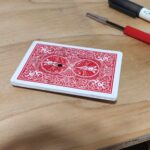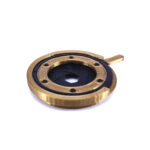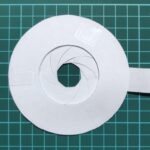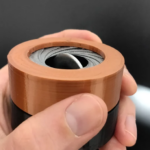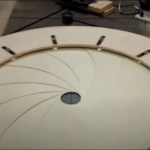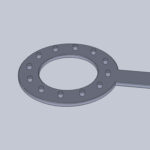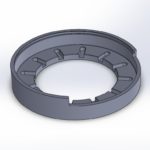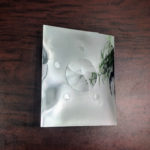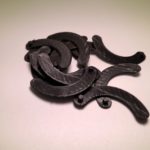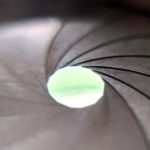Halloween is a holiday like no other. It’s a time when imagination runs wild, and the boundaries between reality and the supernatural blur. Makers take this opportunity to showcase their skills, turning their homes, yards, and even themselves into hauntingly impressive works of art, that can occasionally incorporate mechanical iris diaphragms to add an extra […]
Is this your card?
Opening up the illusion To an extent, iris diaphragms are a clever trick in themselves. Without knowing how they work, one might imagine there’s something quite magical about how they open and close in such a mesmerizing manner. So when a magician approached seeking help creating a new magic trick, it was an intriguing prospect […]
Skylight Iris
Somewhere, far off in the hills of Colombia, one of our new skylight iris designs is currently being installed in a brand new architectural build. Made of marine-ply and fibreglass, this custom iris makes use of Delrin bearings for a silky smooth and quiet operation. During the day it opens up wide to let the […]
Night Vision Iris
Introducing the latest optics technology in our range – the 37 mm 3D printed iris diaphragm. With an aperture range of 1.5 mm to 24 mm, this innovative product is perfect for night vision goggles, such as the PVS-14, and has a wide range of potential uses in other industries as well, including microscopy. 3D […]
Steampunk Goggles Iris Diaphragms
Created to both compliment and add function to your steampunk look. These iris diaphragms are available to purchase in our store: https://www.etsy.com/ca/shop/IrisCalculator If you’d like to have a go at making your own iris design, please do sign up to our design software. You’ll be able to customise the size and many other design parameters. […]
How To Make a Paper Iris Diaphragm
Papercraft is a wonderfully accessible thing, and so what better project to make than a paper iris diaphragm. Building on lessons learnt from last time, we go into more depth, and cover every single step in the design process. What Is An Iris Diaphragm? Let’s start with a quick recap and inform ourselves what an […]
Diffraction Spikes Produced by Iris Diaphragms
While we have all been blown away by the first set of images that arrived yesterday from it’s L2 parking orbit, up until recently we’d only seen NASA’s James Webb Space Telescope (JWST) incredible calibration images. One of which highlighted very obvious diffraction spikes – a phenomenon caused by the edges of objects placed in […]
Creating the best engagement ring box
A challenge I set myself recently was to create the best engagement ring box possible. I have designed one in the past (which you can also 3D print), and although it functions well, I felt there’s plenty of room for improvement. There are some other great looking ones already available out there on the internet, […]
A New Engagement Ring Iris Box
Close to being the ultimate 3d printable iris box, this engagement ring holder features a fully closing iris aperture, a ring that rises up, and an easy twist action to open and close the box. 60×40 mm, with a 0 – 40 mm aperture range. Available to purchase as a physical item, or as an […]
Brick dome iris
Occasionally an email will arrive from a subscriber who’s project is complete, and their need for the Iris Calculator has come to a natural end. I’m always pleased to hear how the Iris Calculator has helped drive their iris design, and it’s always a joy to see their creations in action. Way back in 2016 […]
Pseudo-shortening
A subtle artefact of stacking leaves in an array is the issue of pseudo-shortening. Being on the continuing quest to make the perfect iris design, it’s certainly a factor to consider when creating an iris diaphragm. So what do I mean when I use the term pseudo-shortening? Let’s start, like all great iris designs, by […]
Printing pins on the drive ring, and why it doesn’t work
Designing an iris to be easily manufactured is obviously advantageous. One particular challenge is making the leaves with pins on opposite sides, and is a common limitation associated with 3D printing on a FDM printer (also known as FFF). This is because parts generally benefit from being printed flat (see my previous article). With these […]
Who invented the iris diaphragm?
Although it is a little unclear as to who invented the iris diaphragm first, there are many candidates that could be credited with the concept. A little searching throws up names such as; Robert Hooke, John Henry Brown, and Joseph Nicéphore Niépce – although it seems Charles Chevalier claims to of used an iris before […]
Download DXF – What happens next?
Once you’ve designed and downloaded your mechanical iris as a DXF, what happens next?
Because the Iris Calculator makes no assumptions as to how you might want to fabricate your iris, those DXF files need to be shaped into your final design. In this brief video I show you an example of how you might extrude the housing into a 3D model using SolidWorks.
Mechanical Iris Greetings Card
8×10″ card, incorporating a 5 blade iris mechanism with a 3.5″ aperture, made of reflective card stock.
Opening the aperture reveals your message.
Message can be easily replaced, and the card used again.
What’s the best material to use for iris blades?
Part of designing a mechanical iris diaphragm is knowing what’s the best material to use for iris blades. Material choice is important for a number of reasons, such as; environment, durability, cost, and ensuring a smooth operation.
3D print leaves with opposing pins
3D printers are incredible pieces of tech. With the lowering the costs of FDM (Fused Deposition Modelling) printers in recent years, it has enabled desktop fabrication to reach the masses – both in the small business environment, and in the home. Sometimes, however, printing a seemingly simple object can also prove to be equally impossible. Including a way to 3d print leaves for an iris diaphragm…
Paper Mechanical Iris Diaphragm
This week, I set myself the challenge of creating an iris that was simple and easy to make. A paper mechanical iris that required no additional materials, or construction techniques, accessible to all. Could it be done?
Refine your iris design with the blade overlap control
The blade overlap control usage in the Iris Calculator is somewhat under utilized by default, as it is set to ensure there are absolutely no light leakages. But it can really help – in combination with some of the other controls – to refine your iris diaphragm design. And it is especially useful when dimensions are tight and you need to maximize all the space you have available.
Canada Day iris
I decided to do something today that I have been wanting to do for a long time; which is to stencil an image on the blades of an iris. This, I figured, has no real practical use – perhaps a new Iris Calculator business card – but none-the-less it would be an interesting effect to see. And as it’s Canada day today, what better image to use than the Canadian flag!

